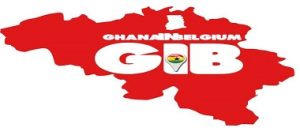 The history of Dormaa and the Akwamu Connection
The history of Dormaa and the Akwamu Connection
The Dormaa people are of the Aduana clan and were originally part of the Akwamu Kingdom during the 17th Century.
The Akwamu people, currently live near the Volta River where the Akosombo Hydro-electric Dam is located . According to oral history, in about 1600 after the death of Nana Ansah Sasraku, the then Akwamuhene, a serious succession dispute arose over the election of his successor. Most of the Kingmakers had chosen the elderly twin prince to succeed him, but he did not win the support of the Queenmother and a section of the stool elders (the Kingmakers).
For sometime, it was not possible to install a new chief. Consequently, a civil war nearly broke out. In a bid to avoid any possible strife, a section of the elders of the Adonten Division in consultation with the Queen mother – Nana Mpobi Yaa decided to leave Akwamu with the junior twin who was the Queenmther’s favorite. A great number of the people including some of the royals followed the Queenmother.
The first place where these peace-loving people chose to stay was Awanwenso which later became Akwamu Awamwenso. From Awamwenso, they moved on to settle at another spot which was named Nyanase. Here it is said the Queenmother of Twifo-Heman met the immigrants and demanded to know how far they have travelled.
A spokesman of this group is said to have answered, “We are from Akwamu where we are faced with a dispute over the installation of our chief. We are Do-Omanfo, and we have decided to find a new place of habitation” Do-Omanfo, means people who love their people, or a peace loving people. It was becsuse they were a peace loving people that they decided to relocate instead of engage in a civil war.
From Nyanaase the new home (of the “Do-Oman) the Dormaa people made a third move to a spot near Kumasi, and there Asantemanso was founded and was made the capital of the Dormaa State. Other people were drawn to Asantemanso and soon it grew into a major trading center. As a result the Dormaa State soon grew into a very large one with steady trade in the capital. While it was prospering, it attracted the attention of the Asante. As time went on, in the skirmishes and battles between the Dormaas and Asantes, the latter ruined all that Dormaa State could boast of: Asantemanso was completely annihilated, and the most terrible hurt done to the State was the extent of the loss of life on the battlefield. Among these victims were some of the royals. They were buried there, but when those surviving were abandoning Asantemanso, a group of their number chose to stay behind to guard and look after the tombs of their royals. It is believed that these people stayed behind the bank of Subin River and called the place Asuegya which later became Esumegya.
Heading towards Kwaaman area, the Dormaas founded another town called-Suntreso. A fierce battle broke out again between the Dormaas and the Asantes (Kwaaman ), and unlike the previous occasion the Dormaas this time gained the upper hand. Kwaaman was defeated and the chief of Kwaaman Nana Obiri Yeboah was killed by the Dormaas. Soon after this victory for the Dormaas, Osei Tutu, who succeeded his uncle Obiri Yeboah, avenged the death by waging another war against the Dormaas.
The Dormaas were taken unawares and so they suffered defeat. A large number of the people immediately left Suntreso, for they hated to offer themselves as hostages to the Asantes. Consequently, they founded Bomaa (’Boa boa wo man’ which literally means gather your people. The Dormaas are believed to have founded Bornaa with the view to making it a sort of refuge to which other citizens, who had been scared from home could return. Here the chief built for himself and the royals “Abban” a storey building from which he could reconnoiter. The “Abban” soon became closely related to Aprede, a kind of traditional drum. It is said it was the chief’s pleasure, every evening, to listen to the drums for his enjoyment. The throbbing of the Aprede was an attraction to summon the Bomaas and the people from the outlying villages to the Abban; and was the origin of the name ABBANPREDEASE.
As time went on Bomaa lost its real name; for people wishing to enjoy the drumming of the Aprede simply said I am going to Abbanpredease’. In memory of the exodus of Dormaas from Akwamu, the Dormaa State Council, during the reign of the then reigning Omanhene, Nana Agyeman Badu I, built a magnificent palace called “ABBANPREDEASE PALACE. It was officially declared open by President Nkrumah in December 1959”.The Bomaas (now the citizens of Abbanpredease) later moved on to Kontraagyeso after crossing river Tano. Some of them, however, chose to settle at Abesem, a village abounding in cola-nuts. Others from Kontraagyeso still migrated a little further to found a town called Kyiraa – “yen nkyere ha” (we shan’t stay here for long) Kyiraa later became the central market for the people within that area drawing people from places like Wenkyi and Tekyiman.
From Kyiraa, they finally moved toward north-west where they once again encountered the Asantes in a war. Conflicts with the Asantes led to unfavourable circumstances that forced them to seek refuge near the forest belt. From the very outset, they settled at Amasu and eventually dispersed to cover the large area which they now occupy as Dormaa man, (DORMAA STATE).Dormaa today is one of the largest States in the Brong Ahafo Region and Ghana as a whole. It has over 150 towns and villages, notable amongst them are Dormaa Ahenkro, Wamfie, Kyiraa Abesim, Bomaa, Amaasu, Akumtanim, Wamanafo, Aboabo, Nkrankwanta, Kyeremasu, Dormaa-Akwamu, Amaasu-Pampaso, Asuotiano, Kofiasua, Asikasu and Gonokrom.
During the reign of Odeneho Kwafo Akoto ll and Osagyefo Oseadeayo Agyeman Badu l, it was firmly established that the people of Akwamu and Dormaa are one people. And the stools of Akwamu and Dormaa are twin. The elder twin sitting on the Akwamu stool and the junior twin sitting on the Dormaa stool.
The story of the Dormaas has, naturally been a bitter one. The healthy sign of unanimity existing between these two sister states is evidenced by the joint declaration signed by Odeneho Kwafo Akoto ll the late Paramount Chief of Akwamu State and the late Nana Agyeman-Badu I, the then Paramount Chief of Dormaa State. In that declaration, they agreed that inter marriages should be encouraged between the citizens of their two states. In recent times, the Dormaa and Akwamu peoples continue to see themselves as belonging to one family tree and therefore are encouraging social and spiritual contacts to reinforce that sense of oneness.
Today, under the energetic leadership of the current Paramount Chiefs, Osagyefo Nana Agyeman-Badu II, and Odeneho Kwafo Akoto lll, Dormaa and Akwamu are continuing the legacy of their predecessors to bring social and economic development into their communities and improve the living standards of the people. All over the states the spirit of self-help is evident. The current Ghanaian Government has fostered a democratic atmosphere and a stable social environment that have inspired the people of Dormaa and Akwamu to complement government’s effort to build hospitals, clinics, schools, markets, community centers and bring electricity to towns and villages.There is still much to be done. It is a collective responsibility.
google.com, pub-6336011652228911, DIRECT, f08c47fec0942fa0








